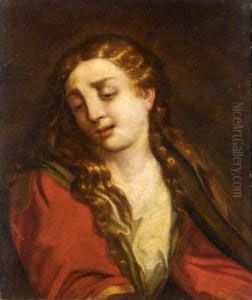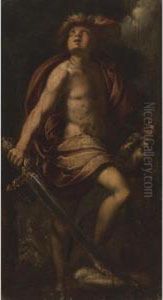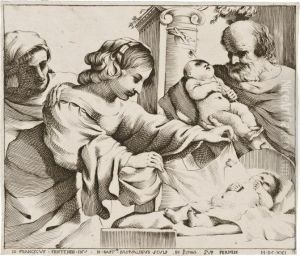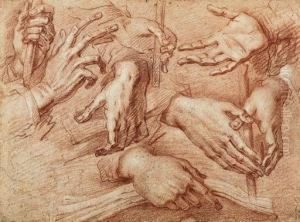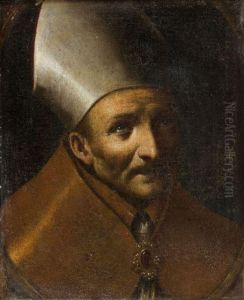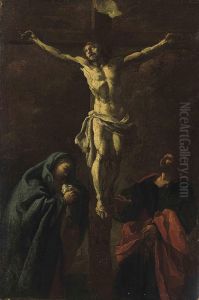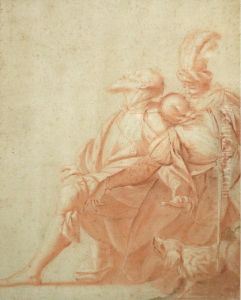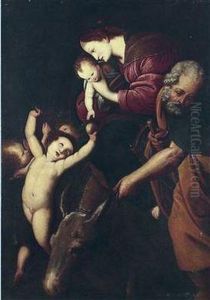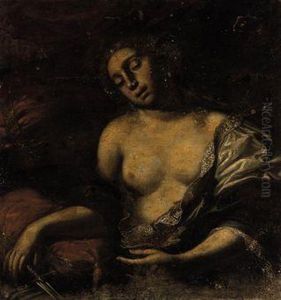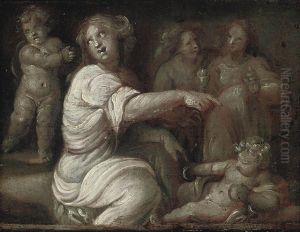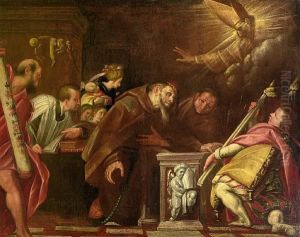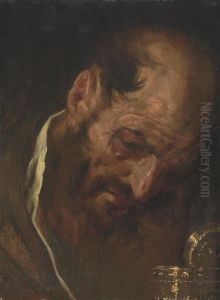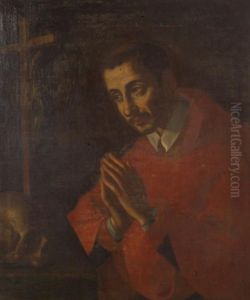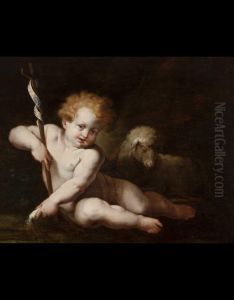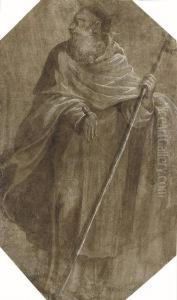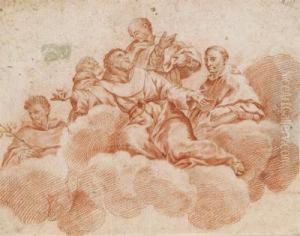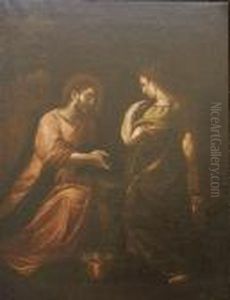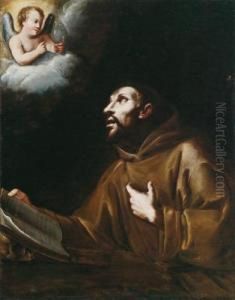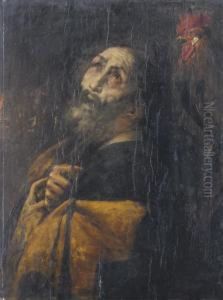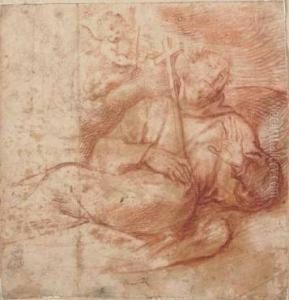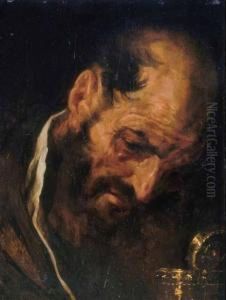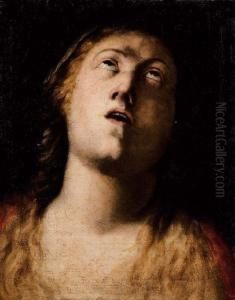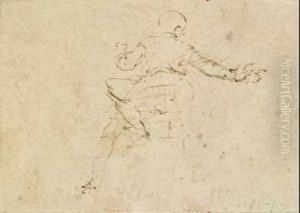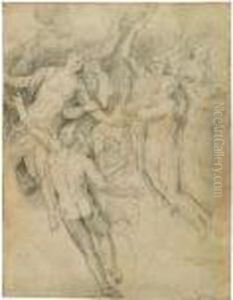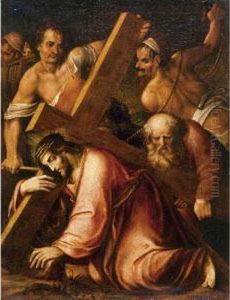Giovanni Battista Crespi Il Cerano Paintings
Giovanni Battista Crespi, commonly known as Il Cerano, was an Italian painter, sculptor, and architect of the late Mannerist and early Baroque periods. Born in 1573 in Romagnano Sesia, a small town in the province of Novara, Piedmont, Crespi was active primarily in Milan and its surrounding areas. He was one of the main artists who contributed to the Lombard artistic scene at the turn of the 17th century.
Crespi's initial training was with his father, who was a painter and architect. He later moved to Milan to continue his studies and was influenced by the work of other local painters such as Simone Peterzano, who was Caravaggio's master. Crespi's style, however, was distinctive and characterized by a combination of Milanese realism and the dynamism typical of the Baroque movement. He was particularly known for his skillful use of chiaroscuro, the dramatic contrast between light and dark, which added a sense of depth and volume to his paintings.
Throughout his career, Crespi received numerous commissions for religious works, and he became known for his altarpieces and frescoes in churches. One of his most notable works is the decoration of the sanctuary of the Madonna dei Miracoli in Saronno, where he painted a series of frescoes depicting the life of the Virgin Mary. His other significant works include frescoes in the Sacro Monte di Varallo and in the Duomo of Milan.
Il Cerano's influence extended beyond painting, as he was also involved in sculpture and architecture. His sculptural works are less known, but they exhibit the same attention to emotional expression found in his paintings. As an architect, he designed the facade of the church of San Fedele in Milan, which is considered an early example of Baroque architecture in the region.
Giovanni Battista Crespi passed away in 1632 in Milan. His legacy lived on through his pupils, including his sons, who continued his artistic lineage. Crespi is remembered as a key figure in the transition from the Mannerist style to the Baroque in Northern Italy, and his works are still studied and admired for their emotive power and technical mastery.
